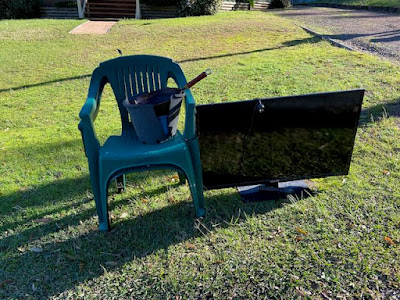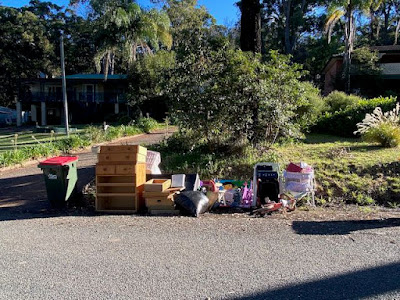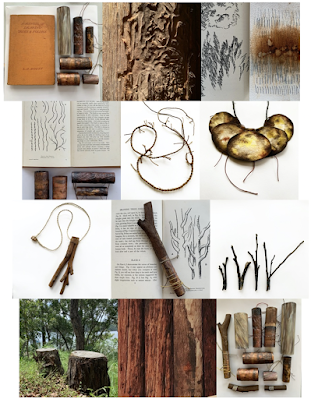 |
| Danica I. J. Knezevic at Gunyah |
After months of lockdown, heading out to Gunyah was pretty bizarre, considering I didn’t branch out of 5km for the duration. The first time I had filled my car with petrol in months was uncanny. 1st of November, travel opened up, and off I went to Gunyah. I packed my car with all my equipment (there was a lot) and blasted the playlist I made for the trip down.
 |
| Danica I. J. Knezevic, work in progress - Zlata and Zlatko |
After I arrived unpacked and settled, I spent the first couple of days drawing embroidery, Croatian folkloric patterns. Specifically, I have been influenced and researched Croatian/ Bosnian tattoo patterns used during the Ottoman Empire to prevent women from being kidnapped. I mixed with contemporary gender symbols to merge ideas around gender and sexuality with my culture. Part of this work is to try and create a new hybrid cultural experience/expression to the inclusion of sexuality. Often Queer diaspora are not able to merge their queerness with their culture due to needing to hide their sexuality. I drew these symbols on a white shirt and a dress to create a new type of Folkloric costume. In doing so, I created Zlata and Zlatko, who reflect the Jungian Anima and Animus, the collective unconsciousness of masculine and femineity. I was grateful to have my friend Anthony come up to help me take the images.
 |
Danica I. J. Knezevic, work in progress - Zlata and Zlatko
|
Part of being at wonderful Gunyah is its peacefulness and the space to contemplate. It was great being able to merge images and have the space to experiment. Fashion designer Sally Jackson came up, and we experimented with wearable art using paper and fabric. These are quick exercises to look at the form, the body. We also enjoyed a swim. The water was so lush! The water is healing, and hearing the waves hit the shore is regenerative.
 |
| Danica I. J. Knezevic and Sally Jackson, Wearable Art experiment with paper and fabric |
 |
| Danica I. J. Knezevic and Sally Jackson, Wearable Art experiment with paper and fabric |
I woke up one morning, and made a friend. We stared at each other for a long time. It was like were mutual gazing.
 |
| Danica I. J. Knezevic, Mutual gazing with a wallaby friend |
I spent about a month before Gunyah making these miniatures, which are a return to a project I did in 2010 (my honours year) where I made a 1:100 replication of my house with video screens in the windows. These 2021 miniatures are made with balsa wood and various materials around my house, except for the wheelchair I bought online, as I didn’t have time to make it before Gunyah. These are for a video work called Body says, No. The work involves a directional soundtrack and movement. I spent a few nights filming these and hope to have the video and soundtrack complete next month.
 |
| Danica I. J. Knezevic, Miniatures for work in progress - Body says, No |
 |
| Danica I. J. Knezevic, Miniatures for work in progress - Body says, No |
 |
| Danica I. J. Knezevic, Work in progress - Body says, No |
A dear friend and artist Cherine Fahd came up for an evening where we swam and enjoyed the jetty. The calm and movement of the waves brought much contemplation. I have to say the Jetty was the place I visited daily and spent a lot of time sitting and laying there writing and thinking.
 |
| Cherine Fahd on the Gunyah jetty |
 |
| Danica I. J. Knezevic filming on the Gunyah jetty |
Taking my camera out and performing and filming on beautiful Worimi Country was such an honour and blessing. I am grateful for the opportunity. Thank you so much, Gunyah and everyone that makes this possible. The making and time I spent were irreplaceable.
 |
| Danica I. J. Knezevic at Gunyah |
Danica I. J. Knezevic
Gunyah residency report, November 2021
dijk.com.au
@danicaijk






















































